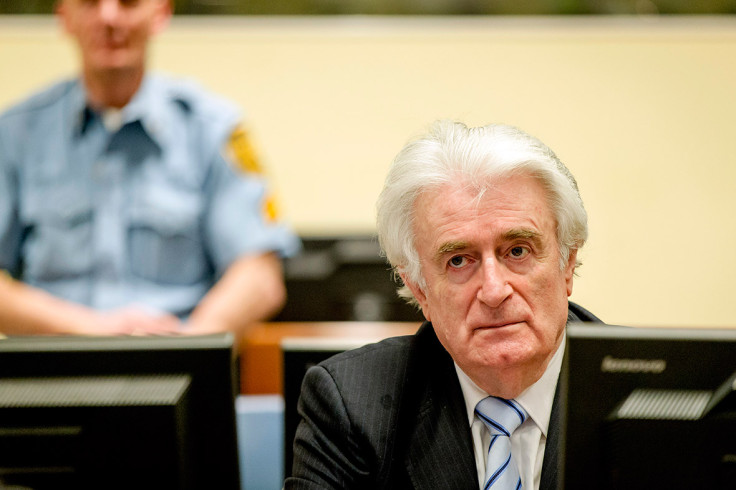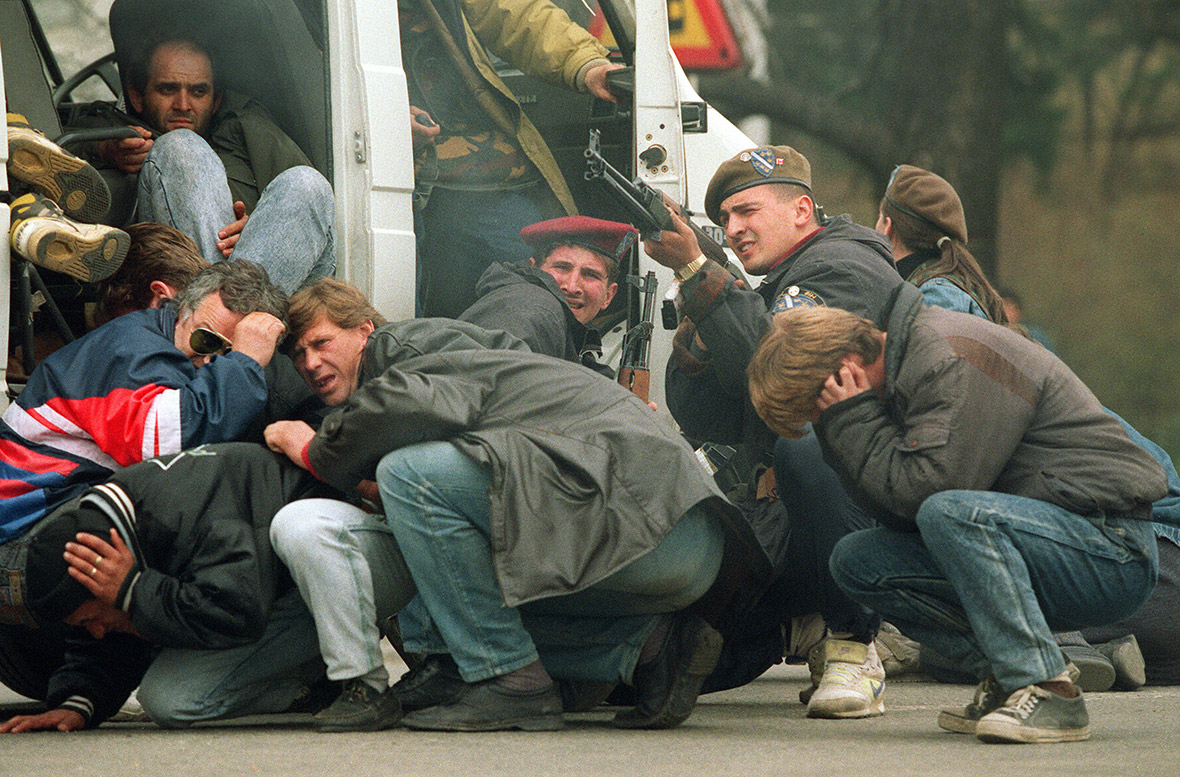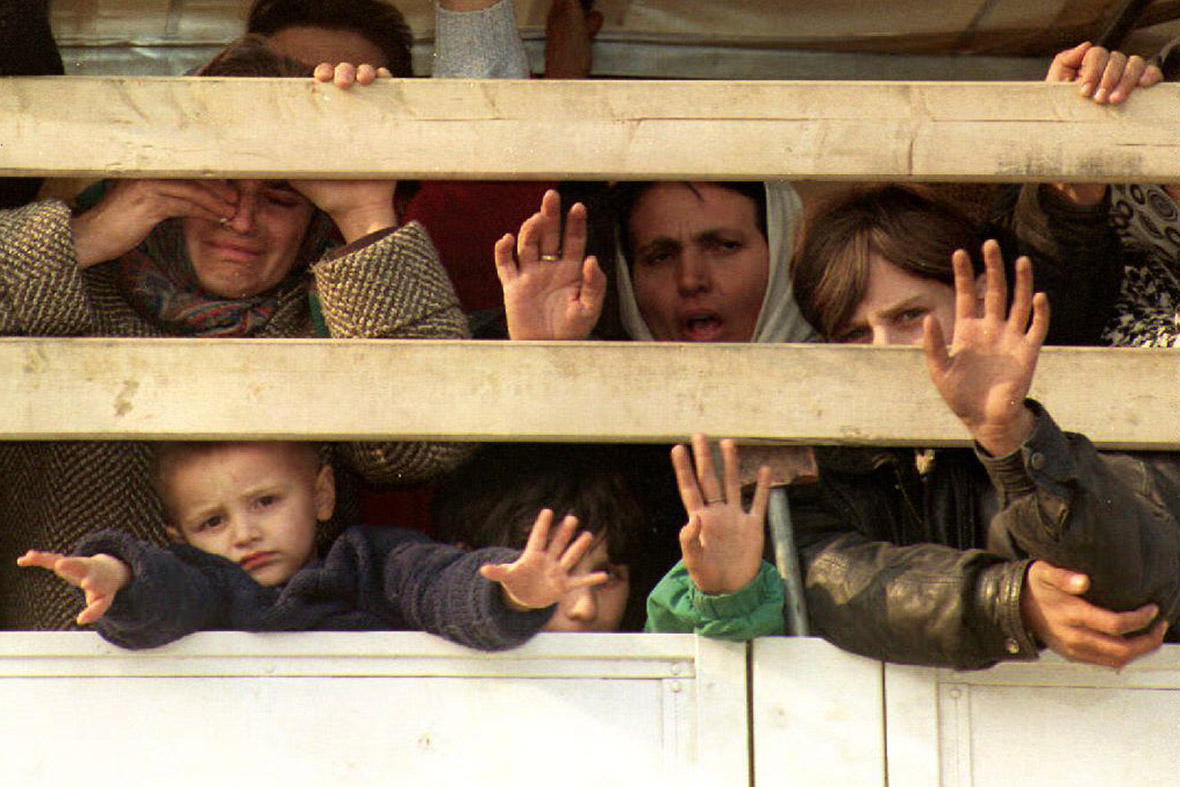Bosnian war photo report: Radovan Karadzic and the slaughter of Muslims at Srebrenica
In July 1995, Bosnian Serb forces killed more than 8,000 Muslim men and boys in the eastern Bosnian enclave of Srebrenica, which was a designated UN safe haven.
Former Bosnian Serb leader Radovan Karadžić has been found guilty of genocide linked to the 1995 massacre of 8,000 Muslim men and boys in Srebrenica, and also criminally responsible for crimes against humanity committed during the war in the Balkans in the 1990s.

A UN war crimes tribunal in the Hague said Karadžić was criminally responsible for murder, attacking civilians and terror for overseeing the deadly 44-month siege of Sarajevo. Presiding judge O-Gon Kwon said the siege, during which the city of Serbs, Muslims and Croats was shelled and shot at by Bosnian Serb forces, could not have happened without Karadžić's support.
However, the tribunal said Karadzic was not held responsible for genocide in a campaign to drive Bosnian Muslims and Croats out of villages claimed by Serb forces in the 1992-95 conflict that left 100,000 dead.


In July 1995, Bosnian Serb forces killed more than 8,000 Muslim men and boys in the eastern Bosnian enclave of Srebrenica, which was a designated UN safe haven. About 15,000 men and boys managed to escape and fled through the woods, but many were murdered by the Serbian army who ambushed them disguised as UN soldiers.
War had broken out in Bosnia in April 1992. The Bosnian Serb army swept eastwards. Srebrenica, a town of 36,000 where Muslims made up 75% of the population, was taken over by Serb troops, but Muslims regained it after several weeks. Early in 1993, Serbs started an offensive on Muslim-held areas. Srebrenica and Zepa became isolated enclaves deep in Serb-held territory. Muslims from the area flocked to Srebrenica and the population swelled to 60,000. They had little food, water or medical supplies.


In April, Srebrenica, Zepa and Gorazde in eastern Bosnia were declared three of six UN 'safe areas'. The United Nations Protection Force deployed troops and the Serb attacks stopped. However, the town remained isolated and only a few humanitarian convoys reached it in the following two years.
Then-Bosnian Serb President Radovan Karadzic ordered that Srebrenica and Zepa be entirely cut off and aid convoys be stopped from reaching the towns.




On 9 July 1995, Karadžić issued a new order to conquer Srebrenica. Troops surrounded the enclave and attacked the observation posts of Dutch peacekeepers, taking about 30 soldiers hostage. The following day, Serbian forces started shelling Srebrenica. The Dutch threatened the Serbs with Nato air strikes if they did not withdraw by morning.
Another day later, Nato planes bombed Serb tanks outside Srebrenica. The Serbs threatened to resume shelling and kill the captured Dutch soldiers. Air strikes stopped and in the evening of 11 July, Bosnian Serb commander General Ratko Mladic entered Srebrenica. An estimated 30,000 Muslim refugees packed around the Dutch peacekeeping base in Potocari, just north of Srebrenica, after Bosnian Serb forces seized the 'safe area'. Mladic sought to calm them, telling the crowd they did not have to be afraid.




Bosnian Serb forces put the frightened refugees on to buses to leave. Many of the refugees were evacuated to Kladanj, 30 miles away on the edge of government-held territory.
The UN noticed that most of the refugees arriving from Srebrenica were women, children, and the elderly and became concerned about the fate of the men.






Over the week that followed the fall of Srebrenica, a total of about 8,000 men and boys from the enclave are estimated to have been killed by Bosnian Serb forces in detention or while trying to flee through the woods.
Men were crammed into warehouses, schools and barns in the area outside Srebrenica.They were shot and buried in mass graves.


Identification of the bodies is difficult: bodies were broken up by excavators that bulldozed them into mass graves. Bodies were also moved from the original graves to secondary locations to conceal the crime. Forensic experts painstakingly work through what is left of the bodies found in the hundreds of mass graves that have been discovered in the area.
Every year on 11 July, the remains of those who have been identified over the past year are buried at the Memorial Centre in Potocari.










Karadzic was indicted along with military chief General Ratko Mladic in 1995 but evaded arrest until he was captured in Belgrade, Serbia, in 2008. At the time, he was posing as a New Age healer named Dr Dragan Dabic, and was disguised by a thick beard and shaggy hair.



Prosecutors hold Karadžić responsible as a political leader and commander in chief of Serb forces in Bosnia, who are accused of the worst atrocities of the war. The 70 year old insists he is innocent and says his wartime actions were intended to protect Serbs. More than 20 years after the guns fell silent in Bosnia, Karadžić is still considered a hero in Serb-controlled parts of the divided country. He is the highest-ranking person to face the tribunal.
Karadžić's trial is one of the final acts at the Yugoslav war crimes tribunal. The court, set up in 1993, indicted 161 suspects. Of them, 80 were convicted and sentenced, 18 acquitted, 13 sent back to local courts and 36 had the indictments withdrawn or died. Serbian President Slobodan Milosevic, accused of fomenting deadly conflicts across the Balkans as Yugoslavia crumbled in the 1990s, died in his cell in The Hague in 2006 before judges could deliver verdicts in his trial.
Three suspects remain on trial, including Karadžić's military chief General Ratko Mladic and Serb ultranationalist Vojislav Seselj.
© Copyright IBTimes 2025. All rights reserved.






















